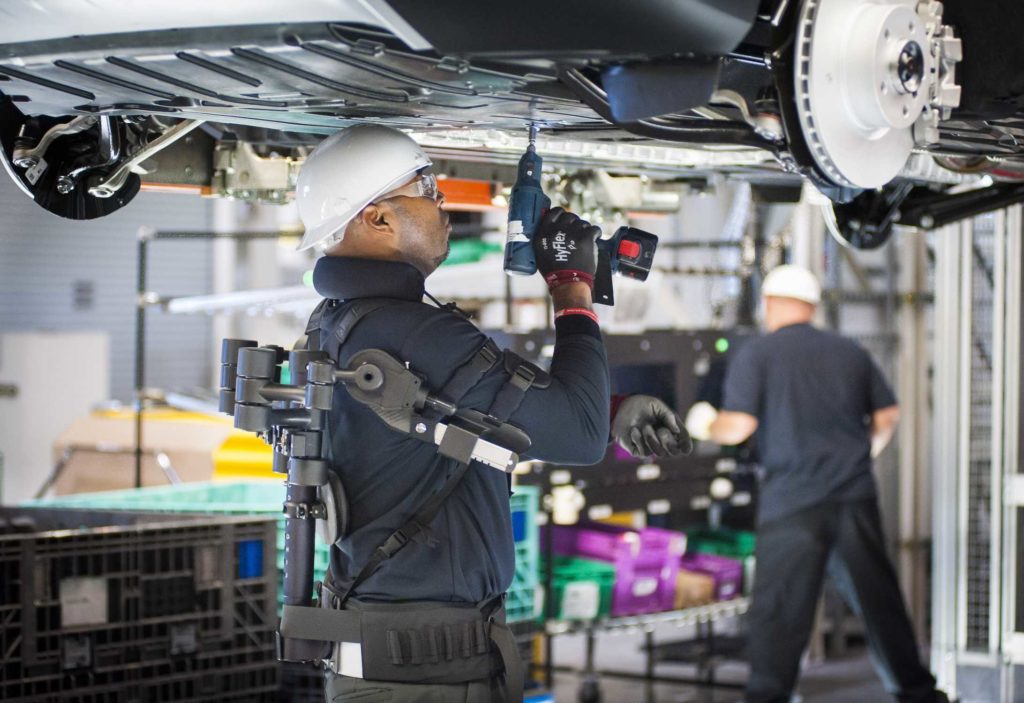One of the barriers to more widespread development and adoption of exoskeletons for industrial, medical, and military use has been a lack of standards. ASTM International this month proposed a guide to provide standardized tools to assess and improve the usability and usefulness of exoskeletons and exosuits.
“Exoskeletons and exosuits can open up a world of possibilities, from helping workers perform industrial tasks while not getting overstressed, to helping stroke victims learning to walk again, to helping soldiers carry heavier rucksacks longer distances,” said Kevin Purcell, an ergonomist at the U.S. Army Public Health Center’s Aberdeen Proving Ground. “But if it doesn’t help you perform your task and/or it’s hard to use, it won’t get used.”
He added that the guide will incorporate ways to understand the attributes of exoskeletons, as well as observation methods and questionnaires to help assess an exoskeleton’s performance and safety.
“The biggest challenge in creating this standard is that exoskeletons change greatly depending on the task the exoskeleton is designed to help,” said Purcell. “For instance, an industrial exoskeleton is a totally different design from one used for medical rehabilitation. The proposed standard will need to cover all types and industries.”
According to Purcell, industrial, medical rehabilitation, and defense users will benefit most from the proposed standard, as will exoskeleton manufacturers and regulatory bodies.
The F48 committee of ASTM International, previously known as he American Society for Testing and Materials, was formed in 2017. It is currently working on the proposed exoskeleton and exosuit standard, WK68719. Six subcommittees include about 150 members, including startups, government agencies, and enterprises such as Boeing and BMW.
ASTM publishes first standards
In May, ASTM International published its first two standards documents, which are intended to provide consensus terminology (F3323) and set forth basic labeling and other informational requirements (F3358). The standards are available for purchase.
“Exoskeletons embody the technological promise of empowering humans to be all they can be,” said F48 committee member William Billotte, a physical scientist at the U.S. National Institute of Standards and Technology (NIST). “We want to make sure that labels and product information are clear, so that exoskeletons fit people properly, so that they function safely and effectively, and so that people can get the most from these innovative products.”
The committee is working on several proposed standards and welcomes more participation from members of the exoskeleton community. For example, Billotte noted that the committee seeks experts in cybersecurity due to the growing need to secure data, controls, and biometrics in many exoskeletons.

An exoskeleton vest at a BMW plant in in Spartanburg, S.C. Source: BMW
Call for an exoskeleton center of excellence
Last month, ASTM International called for proposals for an “Exo Technologies Center of Excellence.” The winner would receive up to $250,000 per year for up to five years. Full proposals are due today, and the winner will be announced in September, said ASTM.
“Now is the right time to create a hub of collaboration among startups, companies, and other entities that are exploring how exoskeletons could support factory workers, patients, the military, and many other people,” stated ASTM International President Katharine Morgan. “We look forward to this new center serving as a catalyst for game-changing R&D, standardization, related training, partnerships, and other efforts that help the world benefit from this exciting new technology.”
The center of excellence is intended to fill knowledge gaps, provide a global hub for education and a neutral forum to discuss common challenges, and provide a library of community resources. It should also coordinate global links among stakeholders, said ASTM.
West Conshohocken, Pa.-based ASTM International said it meets World Trade Organization (WTO) principles for developing international standards. The organization’s standards are used globally in research and development, product testing, quality systems, commercial transactions, and more.
The post ASTM International proposes standards guide, center of excellence for exoskeletons appeared first on The Robot Report.